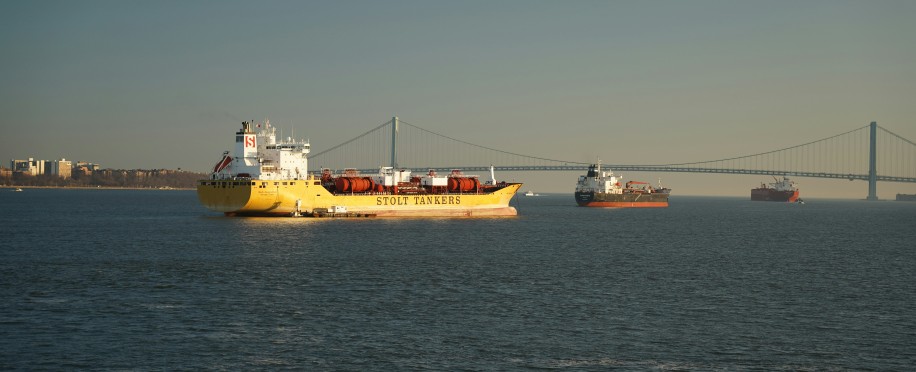Copyright © 2025 lmitac.com All Rights Reserved. Contact - Terms and Conditions - Privacy Policy - Quality Policy - Become an instructor - Vacancies - Sitemap
London Maritime Academy is a trade name for London Premier Groupversion: 2.9.0
London Maritime Academy is a trade name for London Premier Group

Posted on : 10/26/2025, 8:31:38 PM
Human Element in Shipping is no longer a marginal or optional concept; it is the core of maritime safety and a decisive component in the shipping industry. While autonomous machines, automation, and advanced machinery are increasingly integrated into vessels, the human element remains the essential component that connects technology, management guidelines, and the daily operations aboard vessels.
In the context of a rapidly changing maritime industry, human element in shipping illustrates that even the most complex and technologically advanced systems can fail if expertise, competencies, and awareness of seafarers are overlooked. The literature and studies show that over 80% of common accidents and incidents in shipping operations result from human mistakes, emphasizing the critical role of human factors.
As a result, this article examines the human element in shipping and serves as a comprehensive guide, covering its impact on crew performance and management systems within today's rapid maritime landscape.
When we talk about the Human Element in Shipping, we are talking about a broad concept that embraces everything that influences human performance in the maritime environment. It addresses factors related to communication, collaboration, psychological state, well-being, and the ability to handle strain onboard or in the offshore work environment.
The International Maritime Organization (IMO) has officially recognized and adopted this term as a key concept in the development of maritime training and education. It is covered through a wide range of issues, including leadership, situational awareness, fatigue management, and making the right decisions at the right time.
Moreover, in the context of the term "human element," we see that it is neither marginal nor optional, but rather essential to building a safe and profitable culture across all shipping sectors. Research shows that the human element is a complex, multi-dimensional concept influenced by environmental, regulatory, and cultural elements. Therefore, a thorough understanding of it is key to achieving safer ships, stronger crews, and effective management systems.
The main reasons the human element in shipping remains a cornerstone of maritime operations are included here:
Over 80% of mishaps in the maritime sector are linked to human error, miscommunication, or poor decision-making. For this reason, proper training initiatives and interventions for seafarers, performed regularly and systematically, help mitigate risks and enhance crew performance through simple, practical methods.
Techniques like Bridge Resource Management (BRM) improve collaboration, interaction, and communication onboard ships, minimizing common errors caused by misunderstandings and ensuring that every activity is carried out efficiently.
Human element in shipping is crucial for environmental protection. Awareness and adherence to protocols ensure that shipping operations minimize pollution and maintain security and safety regulations in the maritime industry.
Human element guidance from IMO and other governing bodies provides organizations with guidance to design and adapt courses and curricula. These interventions cover the entire spectrum of maritime operations, ensuring that seafarers and crews comply with criteria and follow safe procedures, maintaining overall security on board.
Proper human element management ensures safe, efficient, and successful operations by integrating mastery, competencies, and proficiency while reducing stress and improving decision-making onboard vessels.

Fatigue is among the most pressing issues affecting the human element in shipping. Long seafaring duties, inadequate rest, and operational stress directly impact crew performance.
When seafarers are fatigued, their ability to understand and communicate is impaired, leading to delayed responses in critical situations.
Fatigue increases the likelihood of human mistakes, as demonstrated by most research and papers examining the relationship between fatigue and accident rates.
The human element in shipping is affected by fatigue more than any other factor, leading to poor operation and equipment misuse at sea.
Strain resulting from chronic fatigue leads to physical and psychological well-being problems for seafarers, thus reducing crew performance and impacting the overall management of the ship.
Developing clear policies regarding rest periods and work schedules within maritime management systems is undoubtedly essential to achieving safe operations.
Effective leadership in shipping significantly strengthens the human element in shipping by fostering a safety culture and enhancing crew performance.
Effective leadership stimulates communication across all levels, reducing errors resulting from misunderstandings.
Successful leaders establish a safety culture where seafarers feel safe expressing mistakes, which reduces occurrences and enhances awareness.
Through structured training programs, including Maritime Human Element Courses in London, leaders enhance knowledge, skills, and proficiency using simple and effective approaches to meet changing maritime standards both on board ship and ashore.
In addition, human element in shipping involves engagement with autonomous machines and cyber systems, requiring leaders to support crews in adapting to technological advances.
The Human Element in Shipping requires leaders who understand that the seafarer element encompasses everything that affects crew performance—from psychological to social aspects.
In the evolving maritime industry, technology alone is insufficient. Human element in shipping is a critical element for safe, efficient, and lucrative operations.
Thus, whether you operate in London, Dubai, Athens, Rotterdam, Hamburg, or Istanbul, London Maritime Academy (LMA) offers internationally accredited maritime human element courses designed to meet local and global needs, supported by flexible training methods.
Remember, human element is neither peripheral nor optional—it is the foundation for more secure vessels, healthier crews, and robust maritime operations. Don't wait for accidents; enhance your human factors, strengthen safety culture, and continue your pursuit of excellence in the shipping sector today.